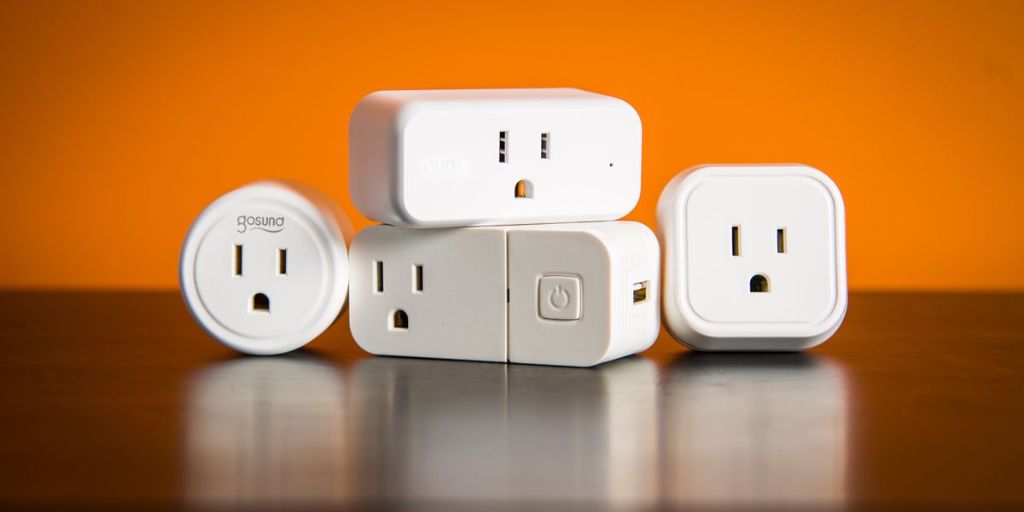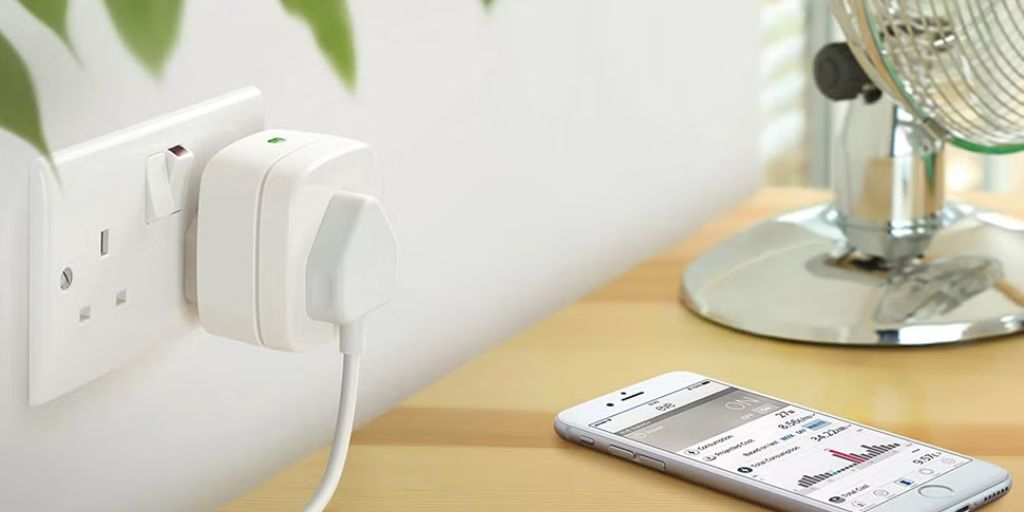Smart home technology has become increasingly accessible, and one of the simplest yet most effective devices to get started with home automation is the smart plug.
These handy gadgets let you control traditional appliances and devices remotely via your smartphone, voice assistants like Alexa or Google Assistant, or through automation routines. Whether you want to turn off lamps automatically, schedule your coffee maker, or save energy by powering down devices remotely, smart plugs can be a game-changer.
In this article, we’ll explore some of the best smart plugs available in 2025, highlighting their features, compatibility, and unique benefits to help you choose the right one for your home automation setup.
What to Look for in a Smart Plug
Before diving into specific models, it’s important to understand the key features to consider when selecting a smart plug:
-
Compatibility: Ensure the plug works with your preferred voice assistants (Amazon Alexa, Google Assistant, Apple HomeKit) and smart home ecosystems.
-
Power Rating: Check the maximum wattage the plug supports, especially if you plan to connect high-power appliances.
-
Connectivity: Most smart plugs use Wi-Fi, but some use Zigbee or Z-Wave; your choice depends on your home network and hubs.
-
Design: Consider plug size and orientation, especially if you have limited space or multiple plugs in one outlet.
-
App and Automation: Look for a user-friendly app that supports scheduling, timers, remote control, and integration with other smart devices.
-
Additional Features: Some plugs offer energy monitoring, away modes, or USB ports.
Top Smart Plugs for 2025
1. TP-Link Kasa Smart Wi-Fi Plug Mini (HS105)
Why It’s Great: The TP-Link Kasa HS105 remains a favorite for its reliability, ease of use, and affordability. It supports Amazon Alexa, Google Assistant, and Microsoft Cortana, making it versatile for most smart homes. The compact design ensures it won’t block adjacent outlets.
Key Features:
-
Wi-Fi connectivity (2.4 GHz)
-
Schedules, timers, and away mode
-
No hub required
-
Compatible with Kasa app for remote control
-
Works with Alexa and Google Assistant
-
Energy monitoring available in other Kasa models
Best For: Beginners looking for a budget-friendly, no-fuss smart plug.
2. Amazon Smart Plug
Why It’s Great: Amazon’s own smart plug is a seamless option for Alexa users. It integrates perfectly with Alexa routines and voice commands, making it easy to automate your home with minimal setup.
Key Features:
-
Works exclusively with Amazon Alexa
-
No hub needed
-
Simple one-button setup
-
Compact size that doesn’t block other outlets
-
Supports scheduling and voice control via Alexa app
Best For: Homes deeply integrated with Amazon Alexa devices.
3. Wemo Mini Smart Plug
Why It’s Great: The Wemo Mini is an excellent choice for Apple HomeKit users as it supports Apple’s smart home ecosystem natively, which many plugs do not. It also works with Alexa and Google Assistant.
Key Features:
-
Supports Apple HomeKit, Alexa, and Google Assistant
-
Compact, sleek design
-
No hub required, connects over Wi-Fi
-
Scheduling, timers, and away mode
-
Works with the Wemo app for remote control
Best For: Users who want Apple HomeKit compatibility with reliable performance.
4. Meross Smart Wi-Fi Plug Mini
Why It’s Great: Meross is a rising brand known for affordability without compromising features. Their smart plugs are compatible with Alexa, Google Assistant, and Apple HomeKit, a trio that not all plugs cover.
Key Features:
-
Works with Alexa, Google Assistant, Apple HomeKit
-
Wi-Fi enabled with no hub required
-
Supports scheduling, timers, and remote control
-
Energy monitoring in some models
-
Compact and easy to install
Best For: Users looking for broad ecosystem compatibility at a mid-range price.
5. Samsung SmartThings Outlet
Why It’s Great: For those with a SmartThings hub, Samsung’s smart outlet integrates perfectly into this ecosystem, allowing control through the SmartThings app and compatibility with Alexa and Google Assistant.
Key Features:
-
Zigbee connectivity requires SmartThings hub
-
Works with Alexa and Google Assistant via SmartThings
-
Scheduling and automation within SmartThings app
-
Energy monitoring capabilities
-
Suitable for SmartThings ecosystem users
Best For: Existing SmartThings users wanting to expand their smart home network.
6. Gosund Mini Wi-Fi Smart Plug
Why It’s Great: Gosund offers affordable smart plugs with solid performance, compatible with Alexa and Google Assistant. They feature a minimalistic design and straightforward setup.
Key Features:
-
Wi-Fi enabled, no hub needed
-
Works with Alexa and Google Assistant
-
Scheduling, timers, and remote control
-
Compact form factor
-
Compatible with Gosund app and Smart Life app
Best For: Budget-conscious users who want easy setup and solid basic functionality.
7. Eve Energy Smart Plug & Power Meter
Why It’s Great: Eve Energy stands out for Apple HomeKit users thanks to its native integration and detailed energy monitoring capabilities, helping users track and manage power consumption easily.
Key Features:
-
Full Apple HomeKit support (no hub needed)
-
Energy monitoring and consumption reports
-
Compact design that doesn’t block outlets
-
Works with Siri voice commands
-
Supports scheduling and automation
Best For: Apple ecosystem users focused on energy efficiency and detailed monitoring.

How to Choose the Right Smart Plug for Your Home
With so many options, selecting the best smart plug depends on your specific needs:
-
Ecosystem Compatibility: If you use Alexa, Google Assistant, or Apple HomeKit primarily, pick a plug that integrates smoothly with your chosen assistant.
-
Power Requirements: For heavy appliances like heaters or coffee makers, ensure the plug supports the required wattage.
-
Connectivity Preferences: Wi-Fi plugs are easiest to set up but may be less reliable in larger homes; Zigbee/Z-Wave plugs require a hub but often offer better stability.
-
Extra Features: Energy monitoring can help reduce electricity bills, while scheduling can automate your daily routines.
-
Physical Space: Consider the size and shape of the plug to avoid blocking other outlets.
Tips for Setting Up and Using Smart Plugs
-
Secure Your Network: Always connect smart plugs to a secure Wi-Fi network with a strong password to prevent unauthorized access.
-
Name Your Devices Clearly: Assign distinct names in the app (e.g., “Living Room Lamp”) to make voice commands and automation easier.
-
Use Routines and Automations: Combine smart plugs with other smart devices for scenes, like “Good Night” to turn off all lights and appliances.
-
Monitor Energy Use: If your plug supports energy tracking, regularly review consumption to identify power-hungry devices.
-
Update Firmware: Keep your smart plug firmware updated to access new features and security patches.
Conclusion
Smart plugs are an affordable, flexible gateway into home automation, allowing you to control a wide range of devices with ease. Whether you’re new to smart homes or looking to expand your setup, the models listed here represent the best options available in 2025, catering to various ecosystems, budgets, and needs.
By choosing the right smart plugs and using them thoughtfully, you can enhance convenience, improve energy efficiency, and make your home smarter and more responsive to your lifestyle.




